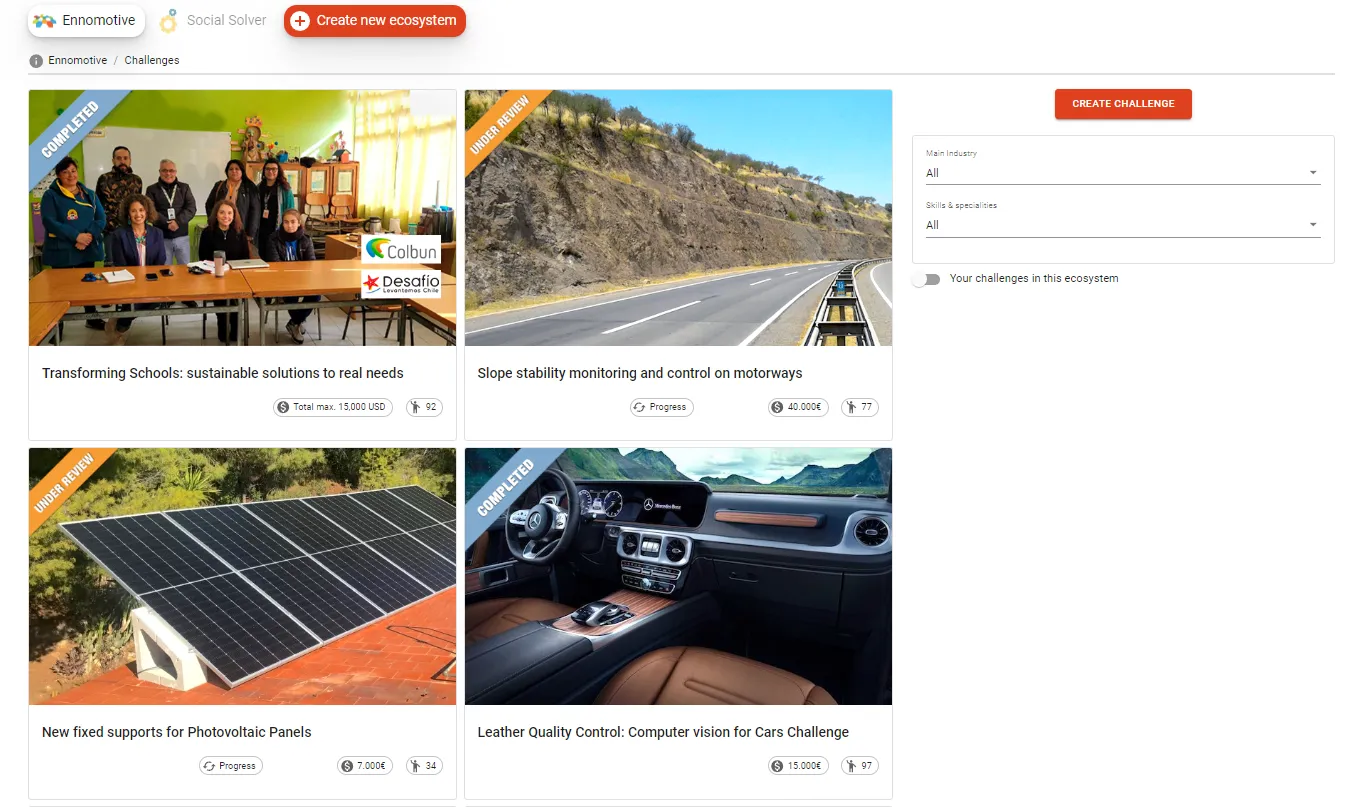Background:
The client, Masisa, a Latin American manufacturer and distributor of wooden boards, has a goal of bringing design, quality and sustainability to furniture and interior spaces to improve people’s quality of life.
The challenge:
Masisa, from Chile and Venezuela, manufactures different kinds of WPC boards that sends to distributors and industrial customers. These boards are then cut in repurposable pieces to be used in furniture and other goods.
See their products in http://www.masisa.com/chi/productos/.
From this piece-cutting process results some waste (scraps and sawdust) that are put to no use. The entirety of the waste is taken to sanitary landfill sites, throwing away its potential value, which translates into an environmental problem and an extra cost for Masisa.
The scraps have the same characteristics as the boards they come from, which were manufactured from the mixing and pressing of wood chips or fiber (of pinus radiata or eucalyptus globulus) with urea-formaldehyde resin and covered with a paper and melamine resin films.
See the annex with Board composition, pictures and scraps typology and sizes.
The cut, generally in rectangular pieces, is made on standardized boards ((4x8, 5x8, 6x8 feet and a varying thickness in between 5 and 30 mm.
Masisa uses an optimization software to the cut on the board and minimize the material loss for each order (if you are interested visit MASISAOPTIMIZA.COM).
The estimated average loss per board is 10% and it goes from 1% to 40%. The board industry, only in Latin America, has an installed production capacity of over 12 millions of cubic meters.
The estimated costs in waste storage, removal to landfill and taxes per month are 1,450 USD in a typical distribution and cutting centre. It is approximately equivalent to 200 USD per ton of waste.
What the client is looking for:
Seeking to strengthen its sustainability and innovation strategy, Masisa aims to repurpose the scraps so that it is possible to create a new product that integrates Masisa’s offer and generates new income in the cutting centers.
The recycling or repurposing of the scraps can incorporate other materials, a potentially patentable mix in terms of new material or process.
It is outside the boundaries of this challenge to reduce waste or cut down elimination costs. It is also off-limits to go back to the original manufacturing process since the logistic costs are too high due to the current atomization of distributors and industrial customers. In addition, Masisa has unsuccesfully tried a few alternatives like reusing the scraps in WPC manufacturing.
Evaluation criteria:
The proposed solutions will be assessed according to the following criteria:
-
Technical feasibility of the product and proposed application and technology.
-
Market potential.
-
Difficulty of implementation.
-
Lower cost of investment per warehouse.
-
5-year business case.
This is a 3-round challenge with the following deliverables:
Round 1:
-
Product and application description.
-
1st approximation to market potential (Business case).
Round 2:
-
Product prototype (specification).
-
Process description / necessary technology.
-
2nd version of the Business in detail (required investment, recurring costs, maintenance costs, etc).
Round 3:
-
Development plan for the technology.
-
Final business case.
Timeline:
1st round – 6 weeks + 2 weeks for evaluation
2nd round – 6 weeks + 3 weeks for evaluation
3rd round – 4 weeks + 2 weeks for evaluation



